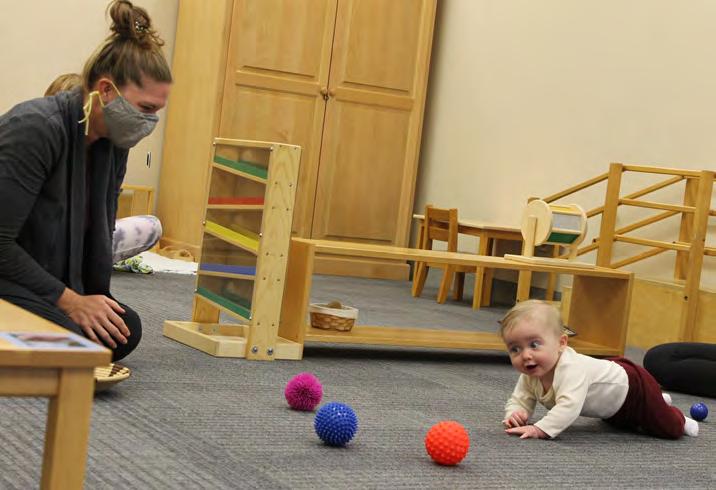
4 minute read
Planes of Development Highlights
8 WEEKS TO 12 MONTHS
PARENT-INFANT PROGRAM
Advertisement
The Parent-Infant program brings parents and their infants together in a thoughtfully prepared environment to learn and to share unique one-on-one bonding experiences. We reimagined our approach this year due to pandemic-related limitations. We instead offered one-on-one sessions as well as small group sessions. Our trained Montessori guide provided support and suggestions specific to each child's needs. A lending library of toys was created, and parents were encouraged to take a material or activity home every week that matched the developmental abilities and interest of their child. Additionally, a new outdoor space was created as an extension of the indoor classroom where work was put on shelves for the children to choose. We look forward to the success of the program and its useful additions being carried into future classes. 12 MONTHS TO 3 YEARS
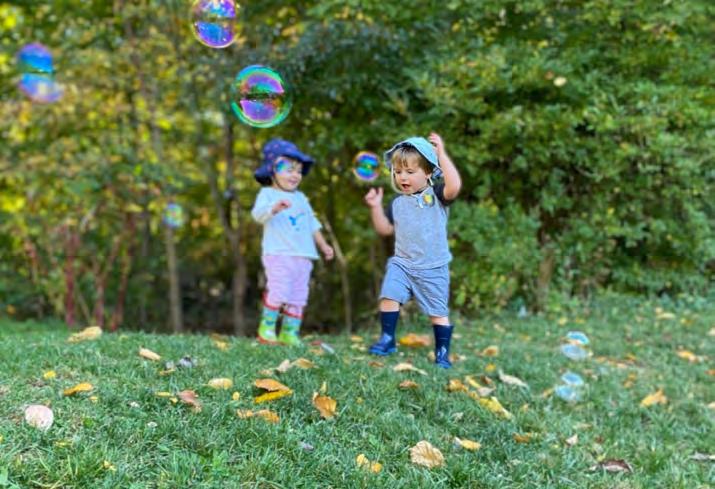
YOUNG CHILD COMMUNITY
Young Child Community children learn and grow at their own pace through self-correcting materials, observation, discovery, and interaction with others. Art exploration, food preparation, environmental care, language development, motor coordination, and independence flourish as each child begins to form a strong sense of self. The observance of how much a child at this age can do for themselves and their environment continually astonishes visitors and newcomers. In addition, the children learn to problem solve and lend helping hands in a myriad of ways. Once a parent has seen their toddler grow through this program, they return with each of their subsequent children. Our YCC levels earned recognition from the Association Montessori Internationale (AMI) after a consultant observed, reflected and guided teachers, and documentation of fulfillment of AMI standards.
3 YEARS TO 6 YEARS

CHILDREN’S HOUSE
Children’s House fosters active learning in indoor and outdoor spaces designed to provide refinement of movement and the ability for children to choose their activities. Guides observe each child’s readiness and mastery of lessons to move them onward. Children learn academic and cultural concepts based upon critical developmental periods of interest and opportunities for deep concentration. Daily activities for caring for their environment and contributing to others foster strong social skills and a sense of belonging to community. Younger students learn from older classmates, while older students are academically challenged and gain leadership skills. Daily open-ended outdoor exploration and play in nature brings wonder and laughter among peers. The growth and development that takes place in Children’s House well prepares the child for Hershey’s elementary program. 6 YEARS TO 12 YEARS
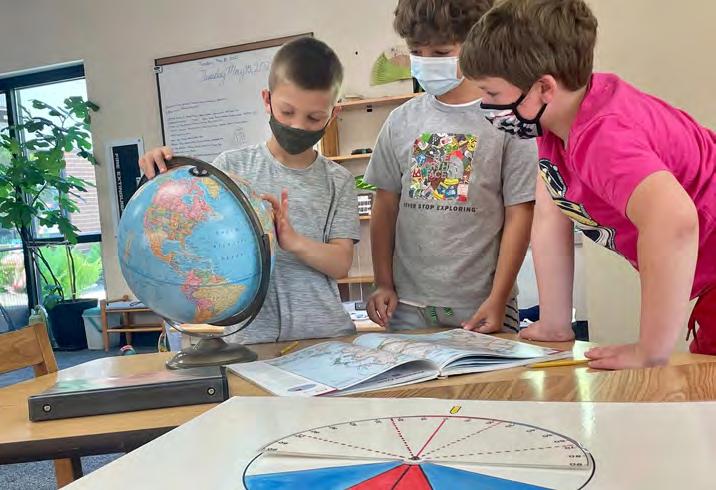
ELEMENTARY
Our elementary program is based on Maria Montessori’s theory of cosmic education for children between the ages of 6 through 12 years. Academics are interwoven within an interdisciplinary hands-on curriculum that consists of language, mathematics, geometry, biology, geography, physical sciences, history, music, foreign language, and art. Our elementary guides foster independence, responsibility, and a sense of community while continually encouraging stewardship. To deepen their understanding of our world, the children utilize and explore our outdoor environment for project-based learning. Elementary students collaborate in small groups, allowing for conversations with higher level thinking skills, developing problem-solving strategies, and building strong communication skills. Lessons are ultimately aimed at helping the student discover the interconnectedness of knowledge within society and their universe.
12 YEARS TO 15 YEARS
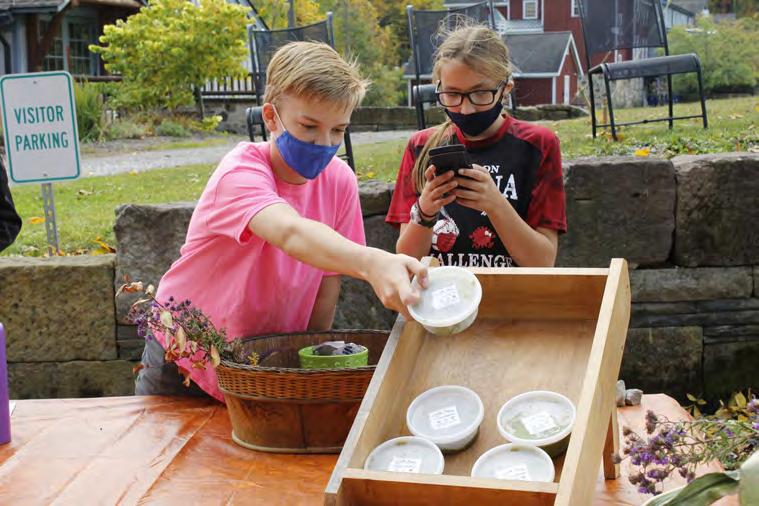
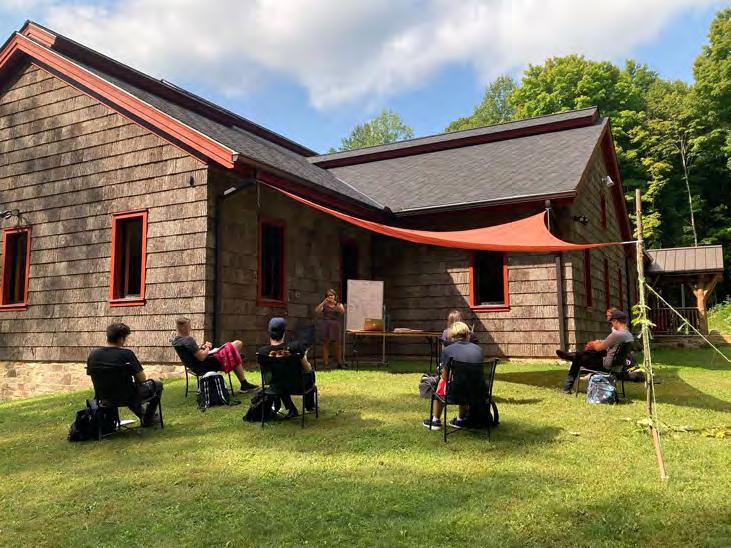
MIDDLE SCHOOL
During these pivotal years in adolescence, students come to understand the planet on which we all live. That is why beyond intellectual development, the goal of the Middle School program is to guide students to become responsible, participatory citizens, critical thinkers, and unintimidated problem solvers within the Hershey community and beyond. Students work to acquire expertise in math, science, and history, while they also build skills in social-emotional intelligence, practical life work, and student leadership. Students in the Adolescent Community come from all over the world and represent a range of socio-economic backgrounds, races, religions, and cultures. Through this community of diversity, students learn about other cultures, which expands their world perspectives and allows them to better understand the global world in which we all live. 15 YEARS TO 18 YEARS
UPPER SCHOOL
The integrated studies of the Upper School tackle local, social, and environmental challenges as focal points. This year, students and staff co-designed an interdisciplinary project that allowed students to earn credit for Humanities, Science, and Business. Students chose a food product and then researched the history and cultural significance, its chemistry and environmental impacts, and then created a business plan. Students proceeded to create and sell the food product at a culminating market event. Engaging projects such as this incorporates multiple disciplines to allow students to think critically with a systems mindset and build skills through practical, hands-on experience. Additionally, students embark on pre-collegiate work and enjoy freedom to pursue individual intellectual, athletic, and artistic interests. Having agency and voice builds participation and connection to their school community, preparing them for greater contribution and meaningful integration with communities at large after high school.






